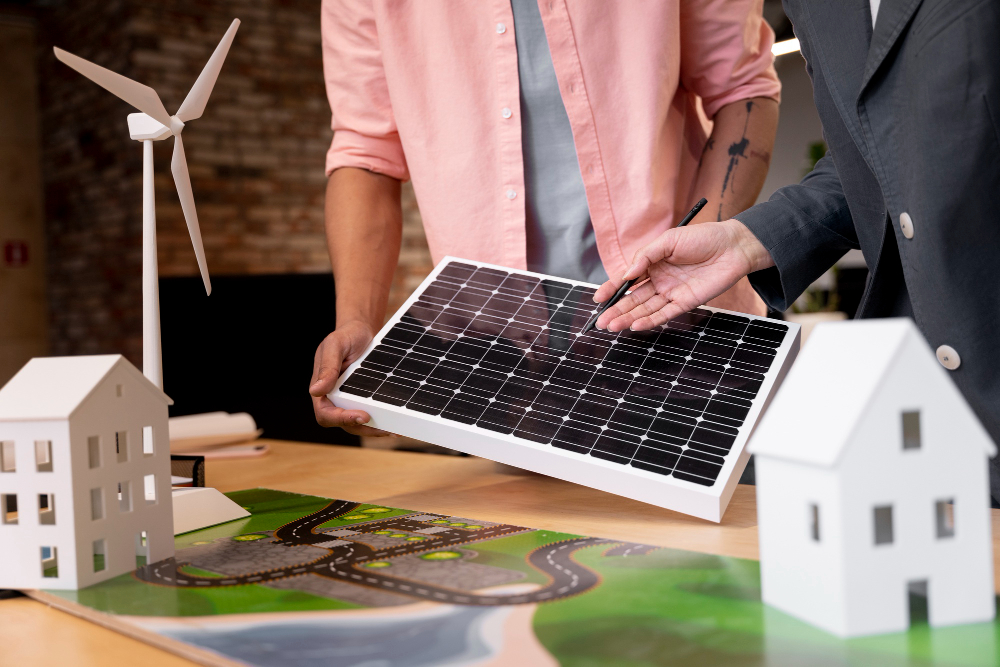Last updated on
Roofing projects often entail more than just aesthetic enhancements; they present an opportunity to make eco-conscious decisions that benefit both the environment and your wallet in the long run. With the rising awareness of sustainability, many homeowners are seeking ways to minimize their ecological footprint during construction endeavors.
In this article, we’ll explore six eco-friendly tips to consider for your next roofing project, ranging from material selection to energy-efficient designs. By implementing these strategies, you can not only reduce environmental impact but also enhance the overall efficiency and longevity of your roof.
Choose Sustainable Materials

When embarking on a roofing project, one of the most impactful decisions you can make is selecting sustainable materials. Traditional roofing materials like asphalt shingles contribute significantly to landfill waste and have a shorter lifespan compared to eco-friendly alternatives.
Consider options such as recycled metal, clay tiles, or sustainably sourced wood shakes. These materials are not only durable but also have a lower environmental impact. Additionally, explore products that have received certifications such as Energy Star or LEED, indicating their energy efficiency and adherence to environmental standards.
Opting for materials with high solar reflectance, such as cool roofs, can further reduce energy consumption by minimizing heat absorption. Cool roofs reflect sunlight, keeping your home cooler during hot weather and reducing the need for air conditioning.
Maintain Regular Roof Inspections and Maintenance
Regular roof inspections and maintenance are essential for prolonging the lifespan of your roof and preventing costly repairs. Schedule annual inspections with a roofing company to identify any signs of damage, leaks, or wear and tear. Addressing issues promptly can prevent further damage and extend the longevity of your roof.
During inspections, prioritize eco-friendly maintenance practices such as using non-toxic cleaning solutions and repairing leaks with sustainable materials. Consider investing in green roof technologies such as vegetative roofs or reflective coatings, which offer additional environmental benefits such as stormwater management and improved air quality.
By maintaining your roof properly, you not only ensure its structural integrity but also minimize the need for premature replacements, reducing waste and resource consumption. Regular maintenance is a proactive approach to sustainable roofing that promotes durability, efficiency, and environmental responsibility.
Implement Proper Insulation

Proper insulation is crucial for maintaining energy efficiency and reducing heating and cooling costs in your home. During a roofing project, take the opportunity to upgrade or install insulation in your attic space. Opt for eco-friendly insulation materials such as recycled denim, cellulose, or wool, which have minimal environmental impact compared to traditional fiberglass insulation.
A well-insulated roof helps regulate indoor temperatures, reducing the strain on heating and cooling systems and lowering energy consumption. This not only saves money on utility bills but also reduces greenhouse gas emissions associated with energy production. Additionally, adequate insulation can prevent heat loss in the winter and heat gain in the summer, improving overall comfort and indoor air quality.
Opt for Solar Panels
Solar panels have become increasingly popular as a sustainable energy solution for homeowners. Integrating solar panels into your roofing project can significantly reduce reliance on grid electricity and lower your carbon footprint. Solar energy is renewable, abundant, and emits no greenhouse gases during operation, making it a clean alternative to fossil fuels.
When installing solar panels, consider factors such as roof orientation, shading, and available space to maximize energy generation. Work with a reputable solar installer to design a system tailored to your home’s energy needs and roof structure. Additionally, explore incentives and rebates offered by local governments or utility companies to offset the initial cost of installation.
Prioritize Rainwater Harvesting
Rainwater harvesting is a sustainable practice that involves collecting and storing rainwater for various uses, such as irrigation, flushing toilets, or washing clothes. Incorporating rainwater harvesting systems into your roofing project can help conserve water resources and reduce reliance on municipal water supplies.
Start by installing gutters and downspouts to channel rainwater from your roof into storage tanks or barrels. These containers can be placed strategically around your property and connected to a filtration system to ensure water quality. Consider using recycled or repurposed materials for your rainwater harvesting setup to further minimize environmental impact.
Practice Proper Waste Management
Roofing projects can generate a significant amount of waste, from old shingles to packaging materials. To minimize environmental impact, practice proper waste management throughout the construction process. Start by recycling materials such as asphalt shingles, metal, and cardboard whenever possible.
Many recycling facilities accept roofing materials and repurpose them for various applications, reducing the need for virgin resources. Additionally, consider donating salvageable materials to local charities or organizations that can repurpose them for community projects. By diverting waste from landfills, you not only reduce environmental pollution but also support sustainability initiatives in your area.
Incorporating eco-friendly practices into your next roofing project is not only beneficial for the environment but also for your home’s efficiency, longevity, and cost-effectiveness. From choosing sustainable materials to implementing energy-efficient solutions, there are various ways to minimize your ecological footprint and contribute to a greener future.
By prioritizing sustainability throughout the construction process and beyond, you can create a roof that is both environmentally responsible and aesthetically pleasing. Take the initiative to make eco-conscious decisions and leave a positive impact on the planet with your roofing project.
Related reading:
Table of Contents





